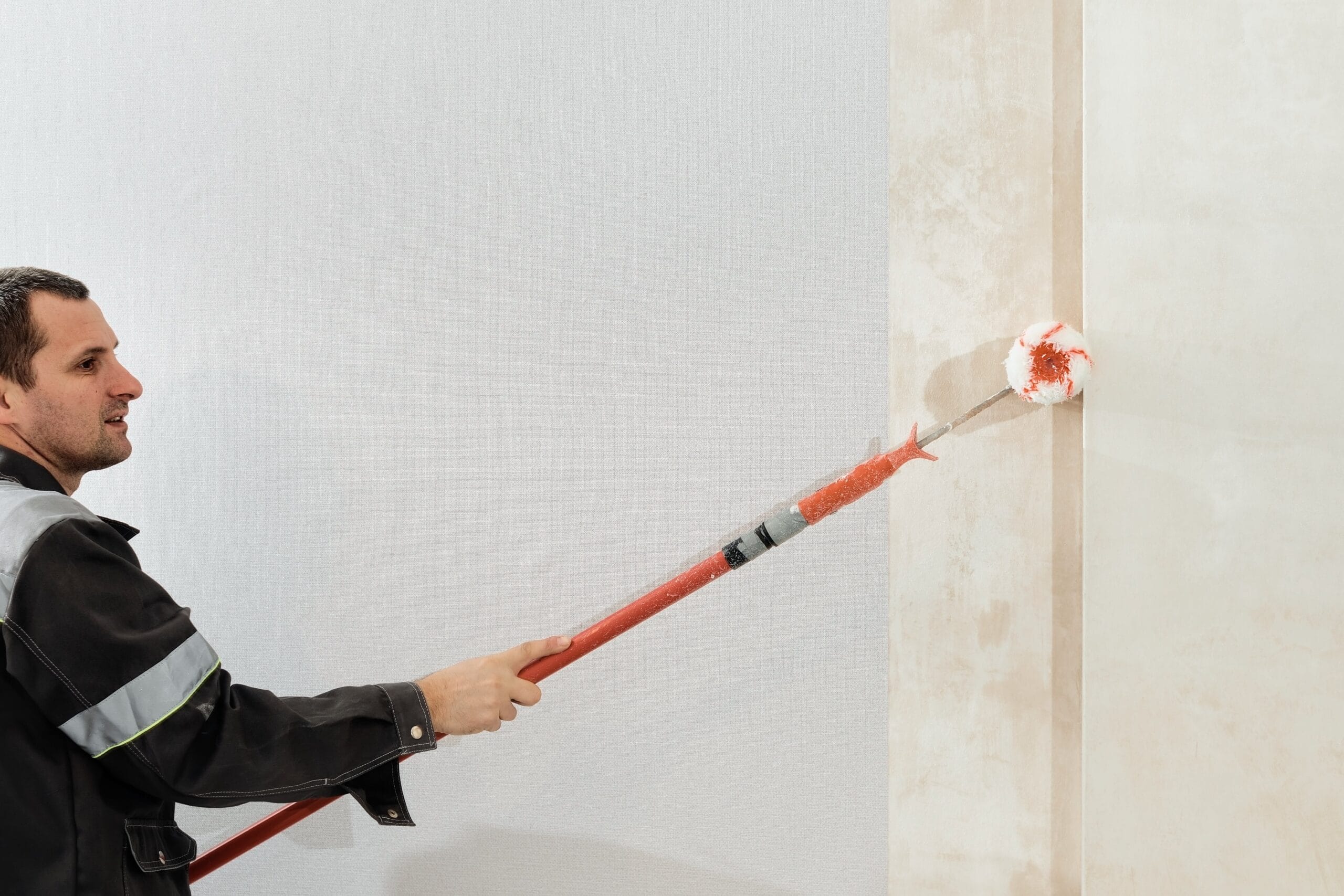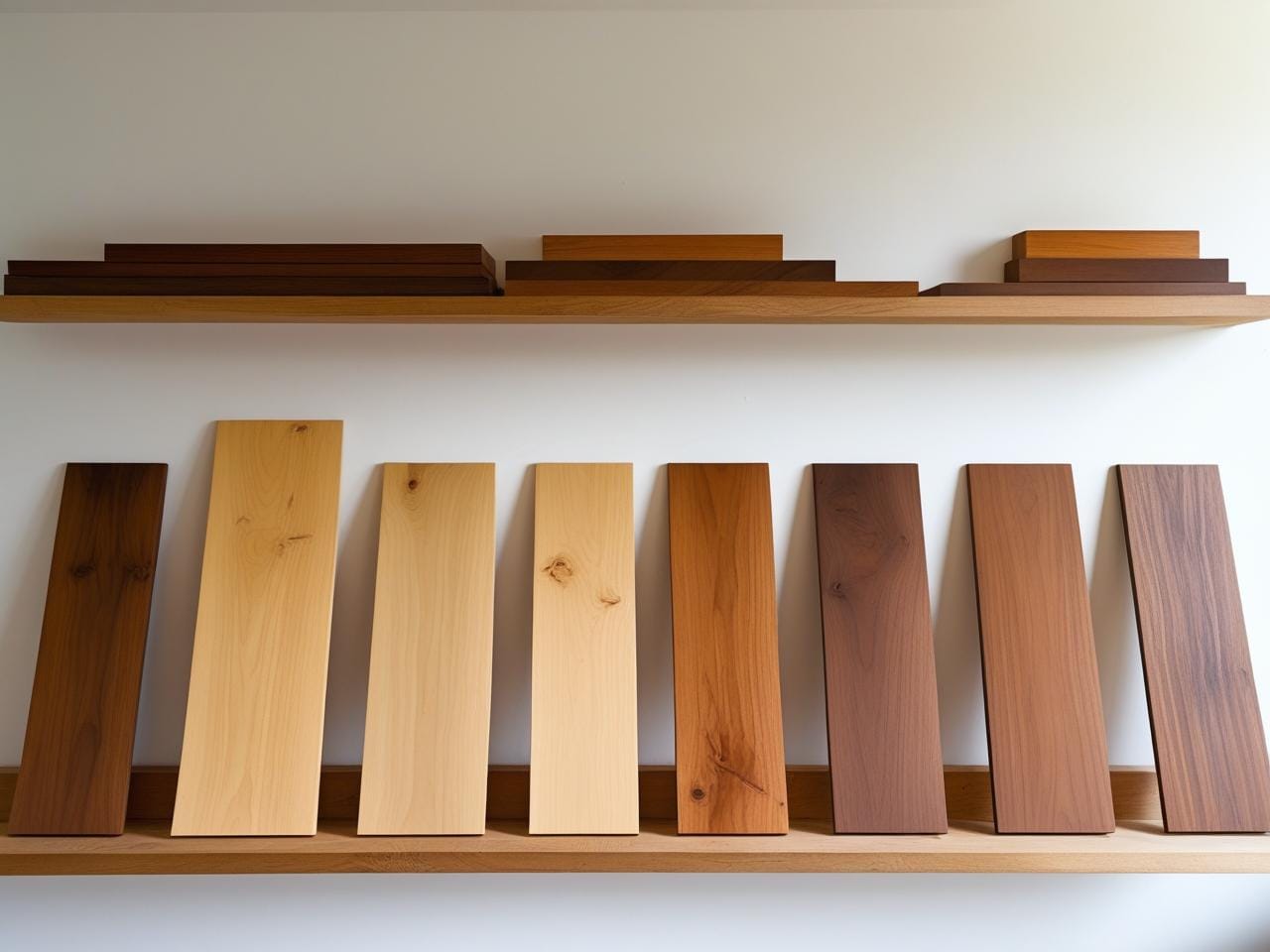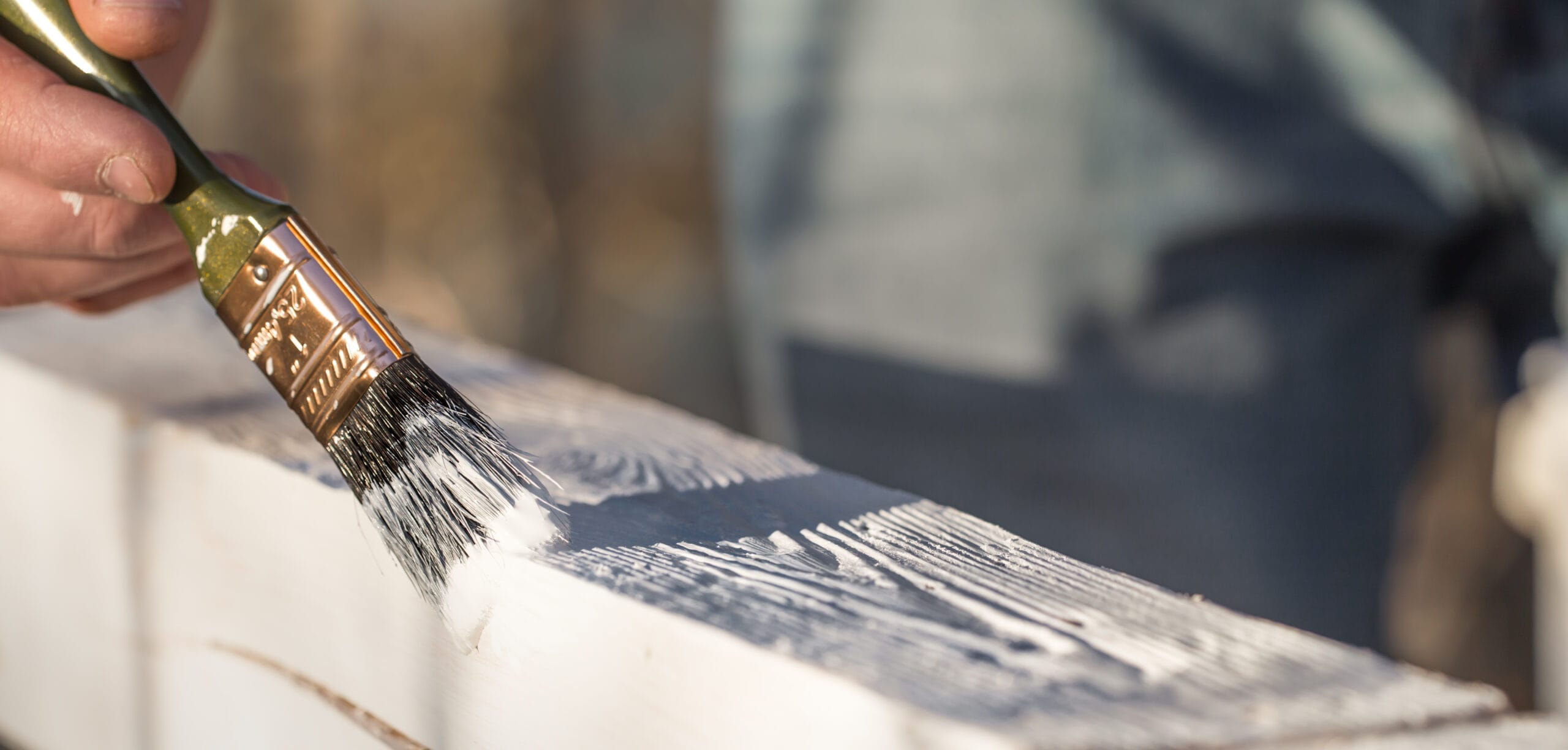
How Long Does Paint Take to Dry?
When starting a painting project—whether you’re refreshing entire rooms or giving furniture and décor items a new look—knowing how long paint takes to dry can make or break the results. Drying time affects everything from how smooth the finish looks to when another coat can be applied or the space can be used again. Factors like paint type, room temperature, and even the humidity in the air all play a role in how quickly or slowly paint sets.
Here are five key things to understand before picking up a brush.
Table of Contents
Key Takeaways
✔ Drying time depends on paint type, surface, thickness, finish, and environmental conditions.
✔ Oil-based paint drying time can take up to 24 hours or more, especially in humid or cool settings.
✔ Fast-drying paint options like acrylic or spray paint are ideal for quicker turnarounds.
✔ Temperature and humidity effects on paint can slow or speed up the drying process significantly.
✔ Paint touch-dry vs fully dry are not the same—surfaces can feel dry but still need more curing time.
✔ Proper storage, airflow, and surface prep help ensure even and successful drying.
✔ Working with professionals ensures the right products and conditions are used for lasting results
How Long Does Paint Take to Dry Based on Paint and Conditions
When asking how long does paint take to dry, it’s important to consider several key factors, including the type of paint, surface material, application thickness, finish, and environmental conditions such as temperature and humidity.
Water-based paints typically dry within 1 to 2 hours, while oil-based paints may take 6 to 24 hours or more.
Even fast-drying paints can feel dry to the touch before they’re fully cured, so it’s best to wait 24 hours before heavy use or recoating unless advised otherwise. Given that 78% of homeowners believe exterior painting is essential for curb appeal, understanding proper drying times ensures both a lasting finish and a strong first impression.

5 Factors That Affect Paint Drying Time
1. Type of Paint Used
The kind of paint applied plays one of the biggest roles in drying time. Water-based and oil-based formulas react differently to air and surfaces. Each type has its own drying process, and knowing the difference helps set the right expectations.
How Paint Formulas React After Application
- Water-Based Paint Dries Faster Due to Evaporation: These paints, including acrylic and latex, dry quickly as water evaporates from the surface. In ideal conditions, touch-dry happens in about 1 to 2 hours, which makes them a popular fast-drying paint option.
- Oil-Based Paint Drying Time Takes Much Longer: This type of paint dries through oxidation, not evaporation. It often takes 6 to 8 hours to become touch-dry and up to 24 hours or more to fully cure, especially on surfaces like wood or metal
- Specialty Paints Offer Varied Drying Timelines: Chalk paint, spray paint, and enamel have different formulations that affect drying speed. Some are designed as fast-drying paint options while others, like alkyds, behave more like traditional oil-based paints with longer drying times.
2. Temperature and Humidity Levels
The surrounding environment plays a major role in how fast or slow paint dries. Even with the right paint, the conditions in the room—or outside—can change the results. Temperature and humidity effects on paint are often overlooked, but they can significantly delay or speed up drying time.
How Climate Conditions Change Drying Behavior
- High Humidity Slows the Drying Process: When the air is full of moisture, it prevents water or solvents in the paint from evaporating efficiently. This can leave surfaces tacky for hours, especially with oil-based paint drying time already being lengthy.
- Low Temperatures Can Delay Dry Time: Cold air thickens the paint and slows oxidation or evaporation, depending on the formula. This is particularly noticeable with oil-based products, where cooler temperatures stretch the timeline between paint touch-dry vs fully dry.
- Warm, Dry Air Encourages Faster Results: A warm environment with low humidity supports consistent drying and curing. It also makes fast-drying paint options more effective, helping surfaces reach the touch-dry stage quickly without sacrificing finish quality.
3. Surface Material and Condition
Different surfaces absorb paint in different ways. A smooth wall won’t dry the same as raw wood or metal. The way paint bonds to a surface often determines how fast it can reach paint touch-dry vs fully dry status.
Why the Painting Surface Matters
- Porous Surfaces Absorb Paint Quickly: Materials like unfinished wood or drywall soak up moisture, which can shorten the touch-dry stage but delay full curing. This matters even more when using oil-based paint, which takes longer to fully set into these textures.
- Smooth or Sealed Surfaces Require More Drying Time: Glossy or sealed surfaces don’t allow paint to grip easily, which slows the drying process. With oil-based paint drying time, this can result in extended curing times and the need for a longer wait between coats.
- Dirty or Unprepared Surfaces Interfere With Drying: Dust, grease, or old paint layers can prevent proper adhesion. Even fast-drying paint options will struggle to perform if the surface isn’t clean and dry beforehand.
4. Application Thickness and Technique
The way paint is applied can make a huge difference in how fast it dries. Thick layers trap moisture and extend drying times, while thin coats dry faster and more evenly. Proper technique helps manage the gap between paint touch-dry vs fully dry.
How Painting Style Affects Dry Time
- Thick Coats Take Longer to Cure: While it might seem efficient, applying too much paint at once can lead to uneven drying. Oil-based paint drying time increases substantially with heavy layers, often resulting in tacky or sticky finishes for days.
- Thin Layers Help Paint Dry Evenly: Applying multiple light coats allows air to circulate better, helping the solvents evaporate smoothly. This approach works well with fast-drying paint options, especially when time is limited.
- Tools and Methods Can Impact Drying: Using rollers, brushes, or sprayers changes how paint spreads. A sprayer lays down a finer mist that often dries faster, while brushes can leave behind thicker strokes that slow down the process.
5. Type of Finish or Sheen
The finish of the paint—whether flat, satin, semi-gloss, or high-gloss—affects drying time more than most realize. Each sheen contains different levels of resins and binders, which play a part in how the paint cures. This factor ties directly into understanding paint touch-dry vs fully dry timelines.
How Choice of Finish Affects Drying Time
- Flat and Matte Finishes Dry Faster: These finishes absorb light and dry quickly, making them ideal for ceilings and low-traffic walls. They’re also easier to work with in humid environments where temperature and humidity effects on paint could otherwise slow down progress.
- Glossy Finishes Require More Time to Cure: High-gloss or semi-gloss paints have more binders and tend to stay tacky longer. Oil-based paint drying time stretches even further with glossier finishes due to their denser makeup.
- Satin and Eggshell Offer Balanced Dry Times: These finishes strike a middle ground between matte and gloss. When paired with fast-drying paint options, they offer durability without long wait times, especially when applied in controlled environments.
How to Tell If Paint Is Touch-Dry or Fully Dry
Knowing whether paint is touch-dry or fully dry can prevent costly mistakes like smudging, premature recoating, or trapping moisture—issues that are especially common with slower-drying products like oil-based paints or in environments with fluctuating temperature and humidity. Since most homeowners spend between $400 and $1,600 to paint a room, understanding drying stages helps protect your investment and ensures a flawless finish.
1. Surface Feel Changes Subtly at Each Stage
A touch-dry surface will feel dry when lightly tapped but may still be soft underneath. Pressing with a fingertip shouldn’t leave residue, but it may leave a slight imprint. A fully dry surface will feel firm and cool to the touch, with no give or tackiness—key for determining whether oil-based paint drying time has finished.
2. Gloss and Sheen Settle Differently Over Time
Fresh paint often looks glossier while still wet, especially in high-humidity areas. As the paint dries fully, the finish levels out, and the sheen stabilizes into its final appearance. Watching this transition helps identify the difference between paint touch-dry vs fully dry, especially with satin or gloss finishes.
3. Smell Dissipates as Paint Cures
Strong odors usually indicate the presence of solvents or moisture still evaporating from the surface. As the curing process completes, especially for oil-based paints, the smell fades noticeably. This is one indirect but useful way to monitor oil-based paint drying time without touching the surface.
4. Timing Guidelines Offer a General Rule, Not a Guarantee
When considering how long does paint take to dry, it’s important to remember that manufacturers provide estimated drying windows—like 1 hour to touch-dry or 24 hours to cure—but real conditions can shift those numbers. Temperature and humidity effects on paint often slow things down, especially in basements or poorly ventilated rooms. Professional painters adjust based on experience, not just labels, and that can make a big difference in outcome.
5. Color Uniformity Signals Full Drying
Uneven spots, darker patches, or gloss differences can mean parts of the surface are still damp. Fully dry paint will appear consistent in tone and sheen across the entire area. This visual cue is easy to miss without training, which is why professionals often rely on both sight and experience before moving forward.
6. Gentle Testing Can Confirm Readiness
A clean, dry finger can be used to lightly touch an inconspicuous spot. If the surface resists pressure and shows no imprint or stickiness, it’s likely fully dry. However, with fast-drying paint options or in jobs requiring precision, professional painters often use tools or moisture meters to confirm drying without risk of damage.
How to Store Painted Items During the Drying Process

Now, if you’re painting items—like chairs, shelves, or smaller decorative pieces—it’s especially important to keep them in a dust-free, well-ventilated space where they won’t be bumped or stacked too soon. Whether using fast-drying paint options or waiting out oil-based paint drying time, the goal is to protect the surface while allowing air to circulate freely.
1. Keep Items in a Clean, Dust-Free Area
Dust and debris can settle into paint that’s still tacky, especially during the paint touch-dry vs fully dry stage. A clean, enclosed room prevents contaminants from ruining the finish. Professional painters often prep storage spaces just as carefully as the painting area itself.
2. Maintain Stable Room Temperature
When figuring out how long does paint take to dry, it’s important to note that fluctuating temperatures can slow curing or cause inconsistent drying, especially with temperature and humidity effects on paint. Aim to keep the space between 65°F and 75°F for most paints. Professionals monitor this closely to avoid extending oil-based paint drying time unnecessarily.
3. Use Air Circulation Without Direct Blowing
Fans can help paint dry faster, but direct airflow can lead to uneven finishes or dust sticking to the surface. It’s better to place fans nearby to keep air moving gently around the item. With fast-drying paint options, this method supports quicker and more consistent drying.
4. Avoid Stacking or Covering Freshly Painted Items
Stacking painted shelves or placing drop cloths over surfaces too soon traps moisture and damages the paint. Items need breathing room to transition from paint touch-dry vs fully dry without smudging. This is especially important during long oil-based paint drying time periods.
5. Use Racks or Risers to Elevate Painted Pieces
Raising items slightly off the floor helps airflow reach all sides, including the bottom. This reduces pooling and helps prevent uneven curing, especially in humid conditions where temperature and humidity effects on paint can create longer dry times. Professionals often use wire racks or wood blocks to keep pieces elevated safely.
6. Limit Traffic Around the Drying Zone
Movement kicks up dust, creates vibrations, and risks accidental contact with wet surfaces. Keeping people and pets out of the area until paint is fully cured reduces chances of costly touch-ups. For larger jobs, professionals set up controlled drying zones to protect finishes while meeting deadlines.
Frequently Asked Questions
Can weather changes during the day affect how paint dries?
Yes, sudden weather changes—like a drop in temperature or a rise in humidity—can interrupt the drying process. If the air becomes too humid in the middle of the day, it can extend the paint touch-dry vs fully dry window significantly. Wind and rain can also affect how exterior surfaces cure, even if the paint was applied in dry conditions. These shifts can be especially problematic for oil-based paint drying time, which relies on consistent airflow and stable temperatures.
Is it safe to use a heater to speed up paint drying indoors?
Using a space heater can help speed up drying, but only if it’s done carefully. Too much heat can cause the surface to dry faster than the layers beneath, which may lead to cracking. A moderate, controlled increase in temperature supports fast-drying paint options and helps balance temperature and humidity effects on paint. It’s best to follow manufacturer guidelines or ask a professional before using artificial heat.
Does paint expire, and will expired paint affect drying time?
Yes, paint has a shelf life—especially once opened. Expired paint often separates or thickens, which can lead to uneven application and longer drying times. This is true for both water-based and oil-based paint drying time, with old oil-based paints sometimes failing to dry at all. Always check the texture and smell before using stored paint, or consult a professional to assess its condition.
Can poor ventilation slow down paint drying in enclosed rooms?
Absolutely. Without fresh air circulation, moisture and fumes linger, which interferes with the evaporation or oxidation process. Poor airflow can stretch the paint touch-dry vs fully dry stage, particularly with oil-based products that need oxygen to cure. Professionals often set up ventilation systems to support consistent drying and manage temperature and humidity effects on paint efficiently.
Is it necessary to stir paint before each use to help it dry properly?
Yes, stirring paint ensures that all ingredients—like binders, pigments, and solvents—are evenly mixed. When these components separate, the drying process can be uneven or incomplete. This can disrupt expected results for fast-drying paint options and lead to unusually long oil-based paint drying times. Professionals always stir thoroughly before and during application to guarantee a smooth, predictable finish.

Book Flawless Painting Services with Prospect House Painting Pros
Bring color, quality, and precision to every wall with help from Prospect House Painting Pros in Prospect, CT. Whether it’s refreshing a single room or repainting the entire exterior, our experienced team delivers smooth finishes and reliable timelines, with no guesswork about drying times. We work with everything from fast-drying paint options to oil-based formulas and understand how temperature and humidity can affect paint and impact your home.
For results that last and details you’ll notice, trust the local pros who know painting inside and out. Work with us today for expert painting projects!
